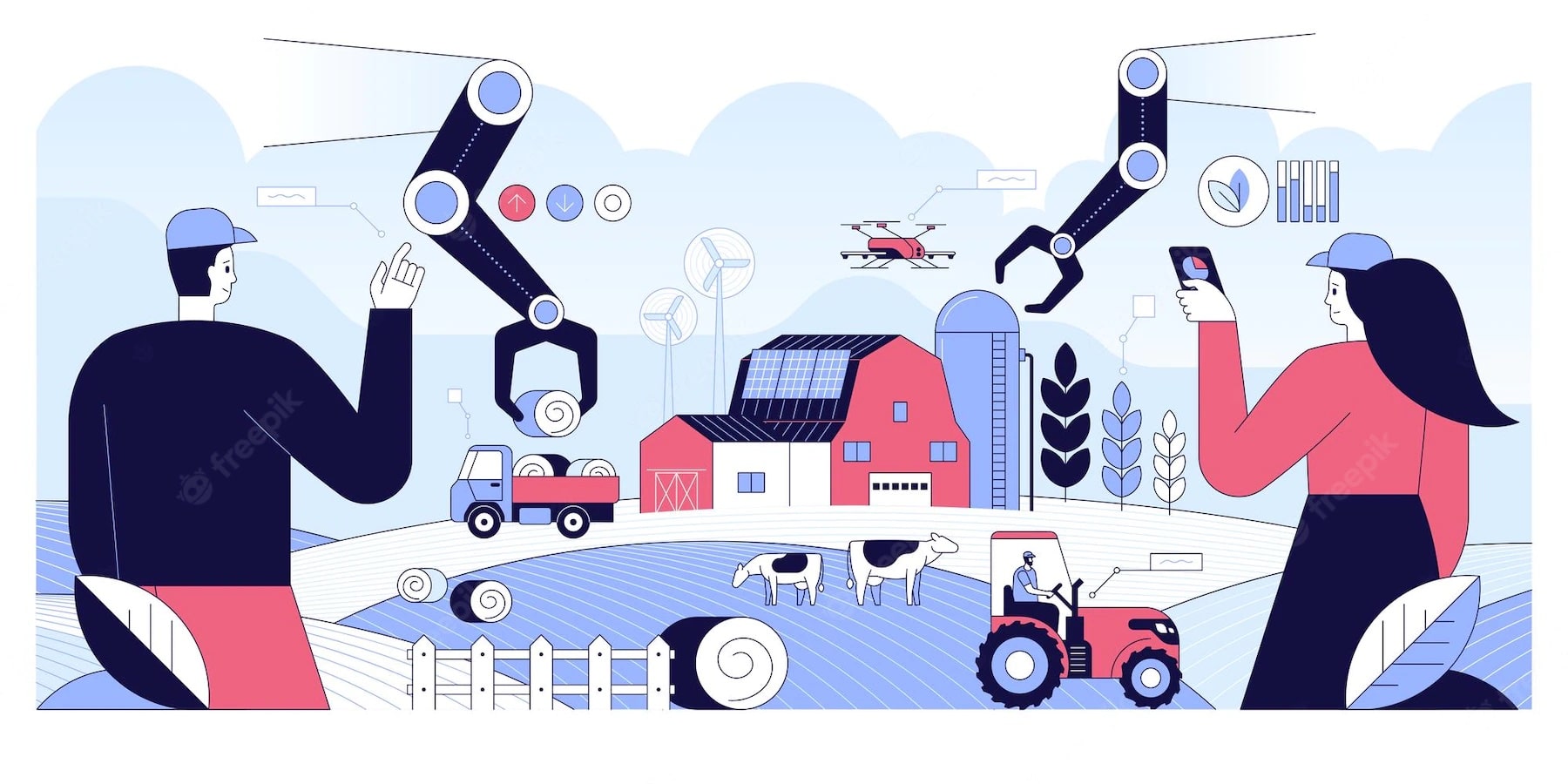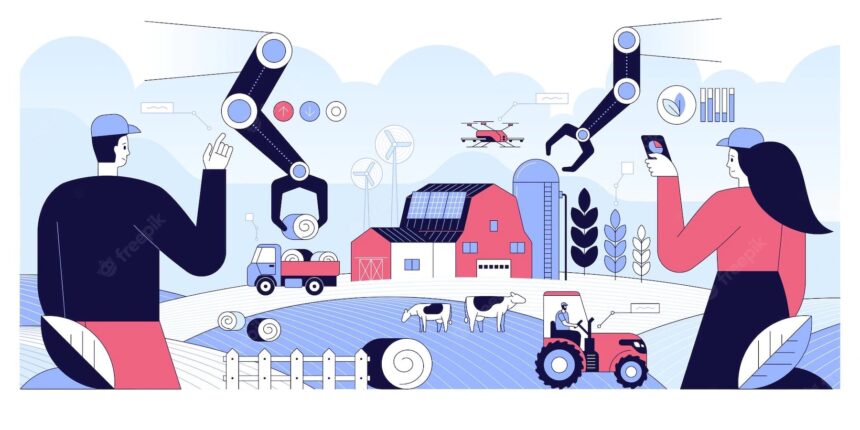
The change was revolutionary when early humans transitioned from hunter-gatherer societies about 23,000 years ago. It allowed people to live sedentary lifestyles instead of nomadic, leading to profound evolutionary impacts. The age-old question has been how to do things more efficiently for a larger yield. That thinking led to the invention of tools, farm equipment, and other technologies.
Faced with the same challenges today, the agricultural industry has turned to automated farming in its many guises. Consider these facts.
The United Nations estimates that the global population will swell by 25 percent by 2050 to 9.7 billion people.
The organization also forecasts a 69-percent increase in agricultural production during this same time to meet the needs of a growing population.
The percentage of land used for agriculture was 36.9 percent in 2018, following a downward trend.
Automated farming offers solutions to meet the growing demand while increasing efficiency and reducing production costs. The technology for many of these applications already exists in other industries, such as package delivery and real estate. The opportunities lie with segueing them into agriculture.
Automated Farming Systems
Technological improvements have slowly been easing their way into the industry with innovations, such as seemingly simple items like the steel plow. Automated farming embraces these practices, using other hi-tech advancements with the possibilities that the Internet of Things (IoT) and Precision Agriculture (PA) Systems can offer.
Source: YouTube
Automated farming uses various tools in a broad range of applications, from autonomous GPS-driven tractors to drones to sophisticated computer software for analyzing the collected data. One of the main advantages of using smart technology is matching the size and capabilities of the devices to the job.
Automated Farming Examples
Several factors add to the unpredictability and, thus, farming costs. They are often the things that make the difference between a successful or non-profitable yield. Delays in harvest can put crops at risk of an early frost. Likewise, long distances between the farm and the market increase the chances of food spoilage. Automated farming can provide much-needed solutions to common obstacles.
Source: YouTube
Automated greenhouses can help farmers meet the needs of consumers who want fresh produce available year-round. It also presents opportunities to grow fruits and vegetables closer to their markets and save on transportation costs. It can make farming more sustainable as the environmental pressures of climate change and provide food for an increasing population.
Drones hold great promise for smart agriculture, with the market projected to increase four-fold to $4.8 billion by 2024. Their value rests with a ready solution for labor shortages and increased efficiency. They can spray fields up to 60 times faster than doing it manually, thereby saving time and money. Precision mapping minimizes waste and pesticide drift by replacing crop dusters.
Final Thoughts
Automated farming is firmly rooted in this industry, with its use poised to increase with rising agricultural demands. Farmers have much to gain from the precision-driven data collection offered by its technological tools. Its benefits extend from increased production to improved safety to smarter crop management to reduce unnecessary losses.
Automated farming can make this practice more sustainable and environmentally friendly. It can provide the best solutions for a growing global population that benefits both consumers and farmers. It takes the guesswork and unpredictability out of agriculture and replaces it with data-driven guidance.











